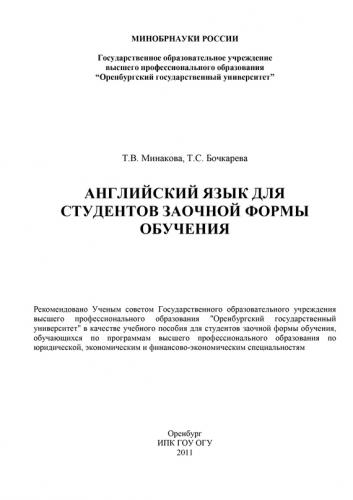Text C. Communication
This identifying, measuring and recording activity is meaningless unless the information is communicated to interested users. The information is communicated through the preparation and distribution of accounting reports, the most common of which are called financial statements. To make the reported financial information meaningful, accountants describe and report the recorded data in a standartized manner. Such data are said to be reported in the aggregate.
Accountants report financial information on a periodic basis, that is, at regular intervals. The frequency of communicating varies according to the needs of the user and the nature of the information reported. For example, the company's treasurer may request daily reports of cash, the sales manager may require weekly reports of sales, and the president may desire monthly reports of operations as a whole. In contrast, annual statements of financial position and results of operations may be suffice for investors and governmental agencies.
The information is reported to the users of financial reports through ratios, percentages, graphs and charts.
2.2.2.3 Задание 3. Ответьте на вопросы по текстам А, В, С
1 Is accounting part of a financial information system?
2 What parts does the process of accounting consist of?
3 What examples of economic events can you give?
4 Identifying involves selecting of economic events relevant to a particular organization, doesn't it?
5 Can all the events be quantified in monetary terms?
6 What events are not considered part of the company's financial information system?
7 Does the accountant only record the measured events in a systematic manner?
8 What else does he do with the measured economic events?
9 Where do accounting records date back to?
10 Why did the rulers of ancient civilization of China, Babylonia, Greece and Egypt use accounting?
11 What was Luca Pacioli?
12 What spurred the development of accounting in the nineteenth century?
2.2.2.4 Задание 1. Прочитайте и запомните следующие слова и словосочетания:
transactions – сделки;
to carry on – проводить;
to provide – обеспечивать;
mutual savings banks – взаимно- сберегательные банки;
lending – предоставление кредита;
loans – займы;
creditworthiness – кредитоспособность;
acceptance – принятие;
transfer – передача, перевод;
deposits – депозиты;
vaults – хранилища;
to store – хранить;
to insure – страховать;
valuables – ценности;
profitable – выгодный;
interest – процент;
percentage return – доход в виде процента;
account debit cards – карты дебета счета;
electronic cash till – банкомат;
computer on-line banking – компьютерные онлайновые расчеты между банками;
clearinghouses – расчетные палаты;
payments – платежи;
income – доход;
savings – сбережения;
yield – доход;
mortgage – ипотека;
facilities – средства;
handling – обработка;
checking account – 1) специальный счет, с которого снимаются деньги по чекам клиента; 2) счет, позволяющий в любой момент вносить и снимать деньги (до востребования);
rate of interest – процент, процентная ставка, норма процента;
liabilities – задолженность;
assets – актив (баланса);
retail bank – банк, занимающийся обслуживанием мелкой клиентуры;
underwriter – гарант размещения (займа, акций и т.п.);
issue of shares – выпуск акций; intermediary – посредник;
merger – слияние, объединение (коммерческое, промышленное и т.п.);
acquisition – 1) получение; 2) приобретение (действие); сбор;
building society – жилищно-строительное общество;
management buy-outs – выкуп права на управление.
2.2.2.5 Задание 2. Прочитайте тексты А, В, переведите их письменно
Text A. What Is Banking
Banking is the transactions carried on by any person or firm engaged in providing financial services to consumers or businesses.
For these purposes there exist commercial banks, central banks, savings banks, trust companies, finance companies and merchant banks. Banking: consists of safeguarding and transfer of funds, lending or facilitating loans, guaranteeing creditworthiness and exchange of money. In other words, banking is the acceptance, transfer, and creation of deposits. The depository institutions are central banks, commercial banks, savings and loan associations, building societies, and mutual savings banks.
Safeguarding and transfer of funds
Vaults and safes are the means for safeguarding of funds. Money is physically stored there. These physical deposits are in most cases insured against theft, and against the bank being bankrupt and unable to repay the funds. In some banks customers can use safety deposit boxes for valuables. To save money in banks is profitable because bank customers receive interest given on savings accounts, a percentage return on the bank's investments
